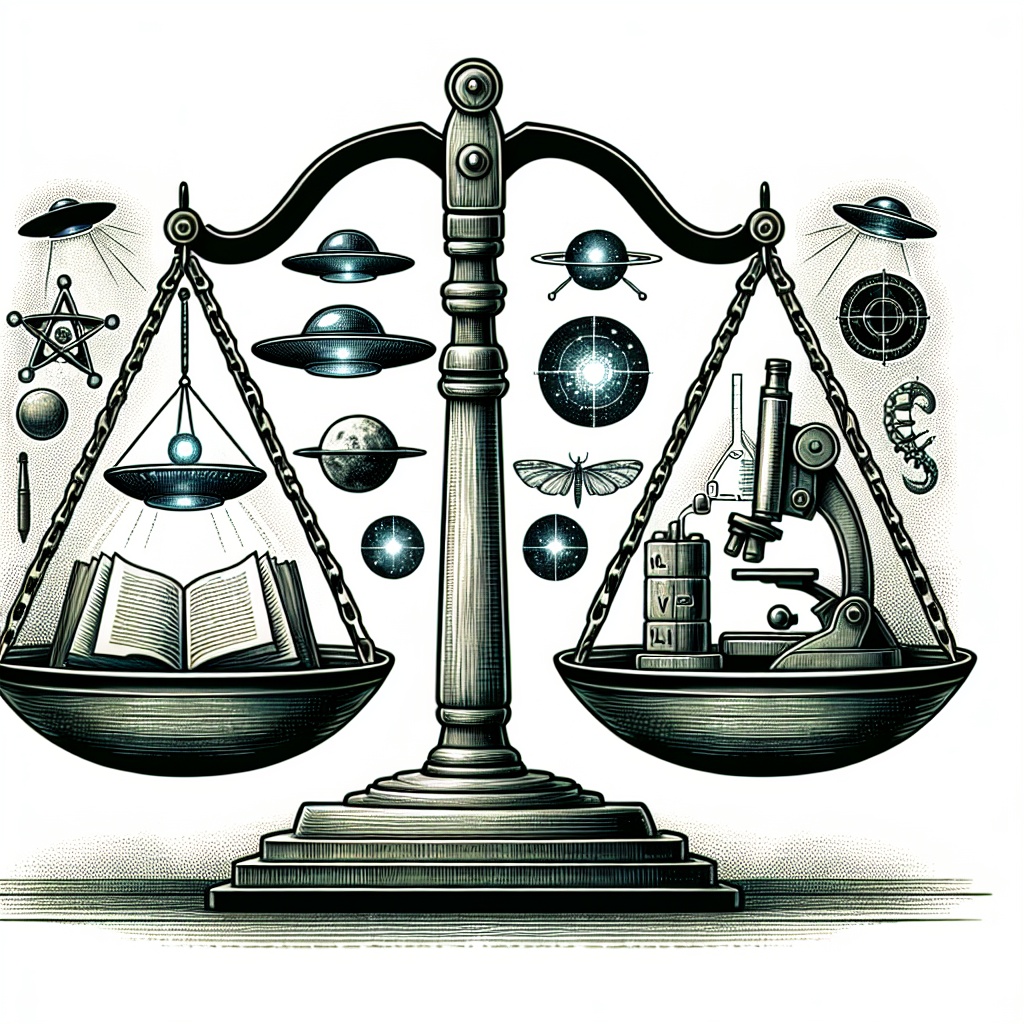Debunking Common UFO Myths: What Science Tells Us
Myth #1: UFOs Are Extraterrestrial Spaceships
One of the most persistent myths surrounding UFOs is the belief that they are alien spacecraft. While this idea fuels countless movies, documentaries, and television shows, scientific scrutiny suggests a more mundane explanation. Most UFO sightings can be attributed to atmospheric phenomena, man-made aircraft, or simple misidentifications. For instance, high-altitude balloons, military jets, and even drones can be easily mistaken for otherworldly vehicles due to their speed and appearance in the sky.
Myth #2: The Government Is Hiding Evidence of UFOs
Conspiracy theories often claim that governments, especially in the United States, are withholding proof of extraterrestrial life. However, the release of classified documents, such as the Pentagon’s Unidentified Aerial Phenomena (UAP) reports, indicates that agencies are investigating these sightings transparently. While the government may not disclose everything, the absence of solid evidence supporting extraterrestrial contact undermines the claim of a large-scale cover-up.
Myth #3: UFOs Are Always Seen at Night
Another common belief is that UFOs are typically sighted only at night. While nighttime sightings can garner more attention due to the contrast against the dark sky, it is important to note that UFOs have been reported during the day. In fact, numerous reputable cases involve daytime sightings that include clear, detailed eyewitness accounts and photographic evidence. This myth undersells the variety of contexts in which observers encounter unidentified flying objects.
Myth #4: Abduction Stories Are Commonplace
The notion that UFOs are synonymous with alien abductions has captivated popular culture. While some individuals have reported experiences of being taken aboard UFOs, psychological studies suggest that many of these accounts can be attributed to sleep paralysis, false memories, or even the natural human tendency to seek patterns in chaotic experiences. Scientific consensus indicates that these narratives often lack solid empirical evidence, which raises significant doubts about their veracity.
Myth #5: All UFOs Are Unidentified
The term “UFO” stands for “Unidentified Flying Object,” but this does not mean that every UFO sighting is unexplainable. Many UFO sightings are eventually identified as natural or man-made phenomena once investigated. For example, the infamous “Phoenix Lights” of 1997 were later attributed to flares dropped by military aircraft, dispelling the myth surrounding them as alien spacecraft. Thus, while not every UFO will be identified immediately, many have logical explanations.
Myth #6: Crop Circles Are Markings from UFOs
The phenomenon of crop circles is often associated with UFOs, leading many to believe they are signs left by extraterrestrial visitors. However, extensive studies have shown that most crop circles are man-made, created as hoaxes by artists or pranksters. The allure of the mysterious has led to a few intricate creations, but investigations confirm that no credible evidence supports the notion that they are linked to alien activity.
Myth #7: UFOs Are Only Seen in Rural Areas
This myth suggests that UFO sightings predominantly occur in remote regions, away from urban lights and distractions. In reality, UFOs can and have been reported in populated areas. High-density regions like cities often witness UFO sightings, although they may not receive as much media attention due to the prevalence of artificial lights, which can obscure visibility. The idea that only rural areas experience UFO encounters is misleading and ignores urban-specific cases.
Myth #8: Advanced Technology Is Necessary for UFO Detection
Many believe that advanced technology is required to detect UFOs, potentially leading to the idea that amateurs cannot witness or document them correctly. Nevertheless, basic observational skills, a camera, or even an ordinary smartphone can capture many UFO sightings. Many footage pieces from widely publicized UFO cases were filmed by everyday people using simple equipment, demonstrating that anyone can report a sighting if they remain attentive and vigilant.
Myth #9: UFOs Are Hostile
Consume media representation, and one may immediately conclude that UFOs represent a threat to humanity. However, there is no empirical evidence to support this notion. Many reports describe sightings without any hostile encounters. The idea of UFOs as hostile entities stems more from cinematic narratives than from scientifically verified encounters, suggesting a misguided perspective fueled by sensationalism rather than factual evidence.
Myth #10: All UFOs Have Anomalous Propulsion Systems
The belief that UFOs possess technologies beyond our current understanding contributes to their mystique. While some reports describe high-speed chases or sudden maneuvers that defy known physics, these descriptions often stem from human limitations in understanding aviation science. Many alleged maneuvers can be explained by the craft’s altitude or atmospheric conditions, which affect perception. Scientific principles can often elucidate these phenomena rather than attributing them to unprecedented technologies.
Myth #11: UFO Sightings Are Always Observed Alone
Contrary to popular belief, UFO sightings are frequently witnessed by multiple observers. Events like the Belgian UFO wave of the early 90s and the 2006 O’Hare International Airport sighting involved numerous witnesses, including police officers and aviation personnel, contributing corroborating evidence. While anecdotal evidence remains contentious, multiple eyewitness accounts lend some credibility to the phenomenon.
Myth #12: Scientists Avoid UFO Research
Another myth suggests that scientists intentionally avoid researching UFOs. In reality, many academic institutions and researchers have conducted extensive investigations into UFO phenomena. Projects like Project Blue Book in the 1950s and more recent studies have aimed to approach UFO encounters with scientific rigor. Scholars around the globe analyze UFO sightings using a variety of disciplines, including physics, sociology, and psychology, establishing that scientific interest does exist.
Myth #13: Technological Constraints Prevent Us from Catching UFOs
One pervasive belief is that our current technologies are inadequate for detecting UFOs. However, advancements in radar technology, satellite imaging, and photographic equipment have all improved our ability to track aerial phenomena. The emergence of commercial drones and military sensors demonstrates that technology is constantly evolving, allowing for an increasingly comprehensive understanding of what occurs in our skies.
Myth #14: Every Government Has Knowledge of UFOs
Some speculate that every government has access to undeniable proof of alien life. However, reports indicate that many countries lack the extensive research frameworks found in nations like the United States. UFO investigations are often dependent on available resources and public interest; therefore, while some governmental bodies may have conducted studies, it does not imply that a global consensus exists on the matter.
Myth #15: All UFO Sightings Are Hoaxes
Although hoaxes do exist in the realm of UFO sightings, categorizing the entire phenomenon as fraudulent is overly simplistic. Many credible UFO sightings come from reputable sources, including trained pilots and law enforcement officers. Scientific investigations into these sightings often conclude that while some reports are explained away, a percentage remains unexplained. This creates an avenue for further research and exploration into the unexplained without immediately branding them as hoaxes.
By addressing these prevalent myths, it becomes clear that the narrative surrounding UFOs is as layered and complex as the universe itself. While many UFO sightings can be explained through science and reason, the enduring fascination with these unidentified phenomena persists, fueling curiosity about what exists beyond our planet.













Leave a Reply